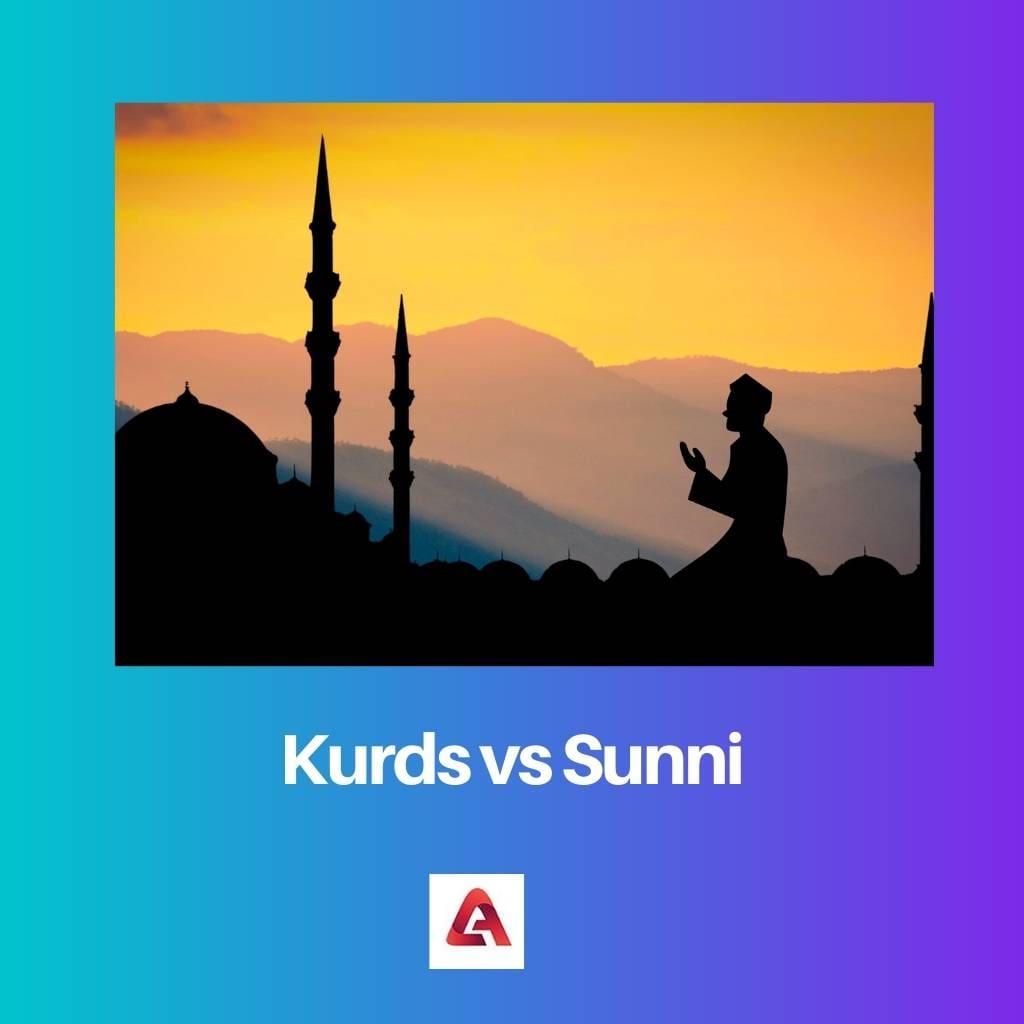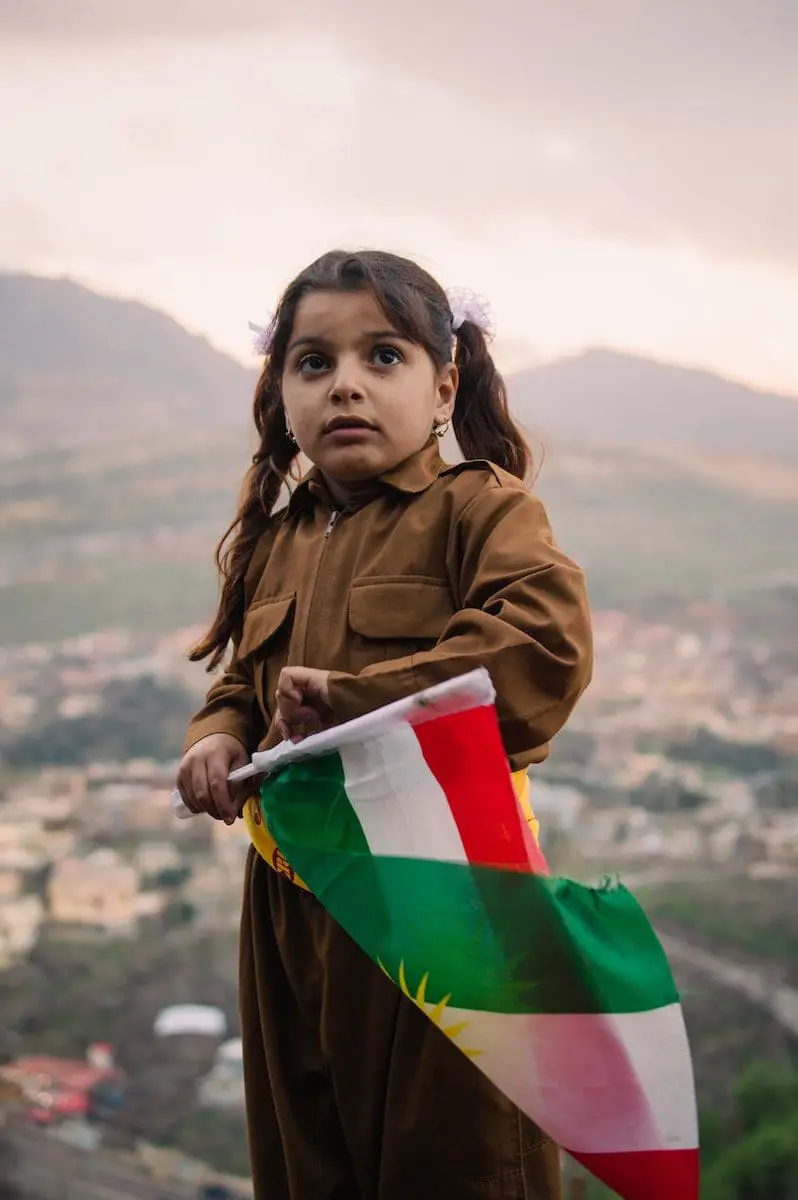As the wheel of religions and practices started making its way through human evolution, Islam managed to evolve and give birth to several branches on the way to human civilization.
The two groups, Kurds and Sunnis, originated from similar territories with quite many similarities. The division of the Asian subcontinent resulted in the formation of Kurdistan, where the ethnic group ‘Kurd’ is found.
Sunnis, the majorly practised Islam group, shares many common aspects with the Kurds, but they surely aren’t the same.
Key Takeaways
- Kurds are an ethnic group predominantly located in the Middle East, while Sunni is one of the two main branches of Islam, the other being Shia.
- Kurds have their own language and cultural traditions, while Sunni Muslims share a common language and cultural heritage but have different interpretations of Islamic law and traditions.
- Kurds have been involved in various political and military conflicts, including the fight for an independent state. In contrast, Sunni Muslims have been involved in political and social movements, including the Arab Spring and various terrorist organizations.
Kurds vs Sunni
Kurds are an ethnic group primarily located in the mountainous regions of Iran, Iraq, Turkey, and Syria. They have their own language and culture, which is distinct from the Arabic and Persian cultures. Sunni is one of the two major branches of Islam, the other being Shia. Sunni Muslims make up the majority of the Muslim population worldwide and are the dominant sect in many countries in the Middle East.

Many Kurds are directly or indirectly influenced by the Islam culture due to geographical conditions, and researches show that Kurds and Sunnis shared the same ancestor as well as practices.
However, some Kurds don’t particularly adhere to the Muslim way of life and are more tilted towards Zoroastrianism. “Kurd” doesn’t particularly represent any religion but a group, an ethnic group that started to reside in Kurdistan along with the neighbouring Sunnis.
Not only Sunnis, but many Kurds also follow Alevism, Shia Islam as well as Yarsanism, and Yazidism.
The Sunnis on the other hand are a populous group that strictly follows the teachings emitted by Quran. The word “Sunni” is derived from the Arabic term “Sunnah”, meaning the teachings and actions of Prophet Muhammad.
These teachings and sayings were recorded in a chronicle called the ‘hadith collections’ which is another core book in understanding the Sunni way of life and their religious practices.
They reside in almost every part of the world and account for around 24.1 to 25 percent of the world’s population.
Comparison Table
| Parameters of comparison | Kurds | Sunnis |
|---|---|---|
| Etymology | They are ethnic minorities residing in Turkey which falls under Kurdistan region, hence this group is called Kurd. | “Sunni” is derived from the Arabic term “Sunnah which means that they are the followers of the teachings taught by Prophet Muhammad. |
| Origins | This group emerged as a minority in the Turkey and Iraq as well as Iran covered territories. Accompanied by neighbouring religions like Sunnis and Shias. | Around 90 percent of the middle east (Egypt, Jordan, Arabia) consist of Sunni population. Their existence dates back to the period when the First Prophet left the world of mortals. |
| Practices | Majorly, Kurds practice Sunni Islam or Zoroastrianism. It is a mixed group. | Strictly adhere to Islam and preach the philosophies and way of life told by Prophet Muhammad. |
| Formed in | Late sixteenth century, they existed as a small group with mixed religious diversities. | Seventeenth century (approx. AD 632) |
| Total Population | 18 to 25 percent of the population of Turkey. | Approximately 24.5 percent of the world population. |
What is Kurds?
Kurds are a group of native Western Asians residing in the mountainous regions of Turkey, Iran, and Iraq. It’s a small ethnic group that emerged in the late sixteenth century as a minority group with diverse religious practices.
Iraq owns the geographical extent of a country formed of Kurds, namely, Kurdistan.
Kurdistan is a geo-culturally diverse territory formed by the Kurds in the 20th century, but the concept was versed from the late 11th century. Here, the Kurds reside in the majority and freely practice the Kurdish culture and Kurdish languages without any bars.
The majority of the Kurdish population adheres to the Sunni Islam concept of life and practice it as their religion. However, there are minority populations of Kurds who devote themselves to other religions like Zoroastrianism and Yarsanism.
The variegated population of Kurds is not only the fourth largest ethnic group present in the Middle East but also is spread throughout many European countries. There are many Kurds who reside in Central and southeastern Iraq, and they are called ‘Fayi Kurds’.

What is Sunni?
The Sunni population in Islam religion is sky-high. It’s the most populous group that preaches the teachings of Prophet Muhammad and abides by the guidelines of Quran Sharif.
Originating from the early Seventeenth century after the death of Prophet Muhammad, the growth of Sunnis never stopped throughout the history of mankind.
Mainly emerged from the Middle Eastern countries; like Saudi Arabia and Jordan, the Sunnis eventually spread across the European countries and Asia as well.
Their laws and jurisdictions strictly adhere to the ‘ijima’ and ‘giyas’. The Sunni population practices the Hadith chronicles, and all the laws are brought up as per four different schools of opinion known as Madh’hab.
As surprising as it may sound, many Kurds belong to the Sunni Islam group.
Although seeking the timeline, Kurds existed for a long time. The Sunni group’s traditions and cultures affected the lifestyle and religious tilt of the Kurdish population in the seventeenth century.
Today, approximately a total of 24 percent of the world population consists of Sunni Muslims spread vastly throughout the world.

Main Differences Between Kurds and Sunni
- The Kurds may or may not be strict Islam followers, whereas The Sunnis are strictly devoted to Sunni Islam only.
- Kurds are a minority ethnic group limited to the Turkish provinces, but the Sunnis are one of the largest populated groups spread throughout the whole world.
- Kurds reside in a particular region, namely, Kurdistan and Turkish provinces, whereas the Sunnis are spread throughout the world and on every continent.
- “Kurds” get their name derived from the concept of Kurdistan, whereas “Sunni” is derived from the Arabic word ‘Sunnah’.
- Kurds have a variegated population of various religious followers, but Sunnis strictly follow Islam.
Reference
- https://thekurdishproject.org/history-and-culture/kurdistan-religion/
- https://www.history.com/news/sunni-shia-divide-islam-muslim

The article’s portrayal of the far-reaching implications of religious practices among Kurds and Sunnis offers a compelling narrative that deepens our appreciation of the complexity of the Middle Eastern socio-cultural landscape.
The article’s exploration of the rich cultural traditions and religious dynamics among Kurds and Sunnis provides a nuanced understanding of the region’s diverse heritage.
Indeed, Ward Poppy. The article’s in-depth analysis of religious multiplicities enhances our insight into the diverse sociocultural fabric of the region.
The article effectively highlights the diverse religious practices within the Kurdish population, emphasizing the rich cultural tapestry of the region.
Agreed, Stephanie. The nuanced exploration of religious diversity among the Kurds offers valuable insights into the complex historical and social dynamics of the region.
The article’s examination of the historical origins and contemporary practices of Kurds and Sunnis enriches our understanding of the multifaceted dimensions of religious and cultural diversity in the Middle East.
I fully agree, Wharris. This article serves as an illuminating resource for comprehending the variegated nature of religious and cultural identities within the region.
The comprehensive comparison between Kurds and Sunnis elucidates the multi-faceted nature of their cultural practices and religious beliefs.
The contextualized analysis of the diverse religious practices within the Kurdish and Sunni populations offers valuable insights into the rich tapestry of their cultural traditions.
I concur, Rowena. The article effectively captures the nuanced interplay between religion, ethnicity, and social contexts in the Middle East.
The in-depth exploration of the religious practices of Kurds and Sunnis underscores the complexities inherent in the cultural and religious fabric of the Middle East.
Absolutely, Ywilkinson. The layered nature of religious and ethnic identities within these groups merits a thoughtful examination, which this article provides admirably.
This piece deftly navigates the historical origins and contemporary status of both the Kurds and Sunnis, providing an enlightening analysis of their respective trajectories.
I appreciate the meticulous attention to detail in outlining the development of these groups over time. The article illustrates the intricate interplay between religion, politics, and society.
The article’s delineation of the religious diversities among Kurds and Sunnis contributes to a deeper appreciation of the intricate social and cultural dynamics within the Middle East.
I share your sentiment, Xharris. The article’s holistic perspective enhances our understanding of the interwoven tapestry of religious and ethnic multiplicities in the region.
This article’s exploration of the geographic, linguistic, and religious dimensions of Kurds and Sunnis provides a compelling narrative of their historical and contemporary significance.
Indeed, Caroline. The article adeptly weaves together multiple strands of analysis to present a nuanced understanding of these complex communities.
The examination of the geographical extent of Kurdistan and its cultural diversity offers a vivid portrayal of the intricate relationships between people, place, and identity.
The meticulous comparison table encapsulates the key parameters of divergence and convergence between Kurds and Sunnis, offering a structured overview of their distinct attributes.
Absolutely, Rbennett. The comparison table serves as an invaluable source for distilling the intricate details of the differences and similarities between these groups.
This article provides a comprehensive overview of the differences and similarities between Kurds and Sunnis, shedding light on their cultural, linguistic, and religious distinctions.
I found the comparison table particularly useful in understanding the key points of divergence and convergence between the Kurds and the Sunnis.
I completely agree, Oscar. Learning about these distinctions is crucial for understanding the complex social and political landscape of the Middle East.